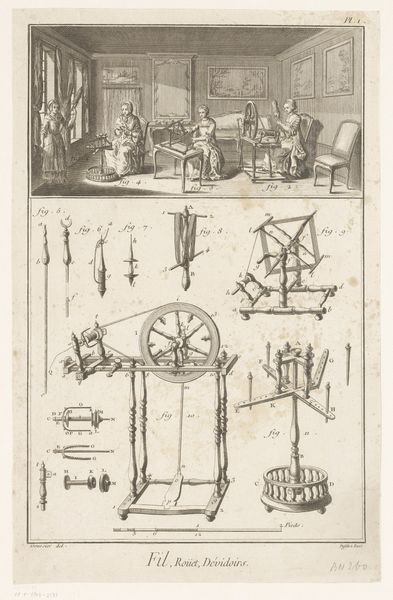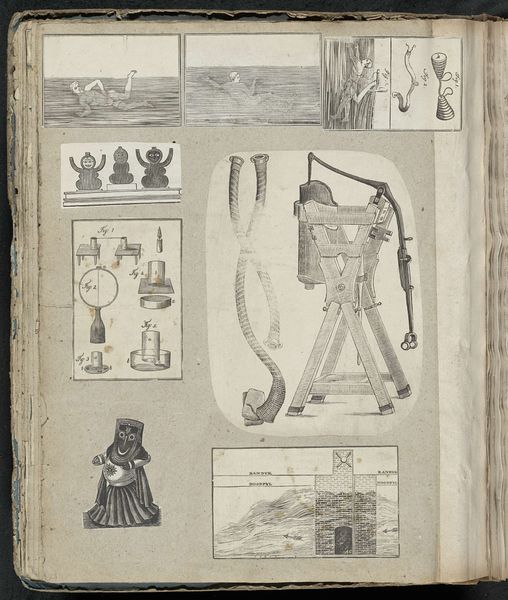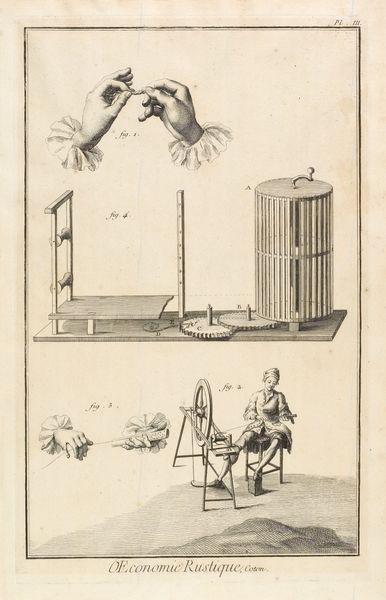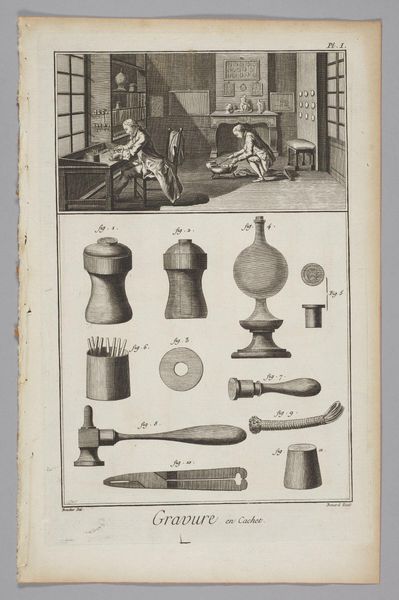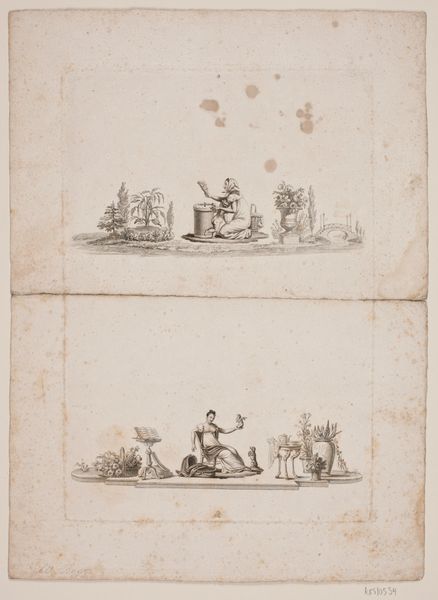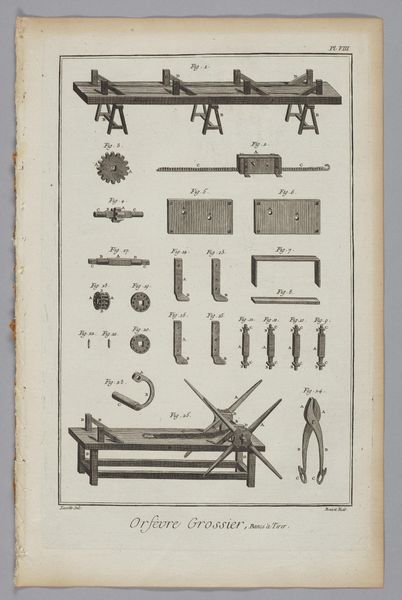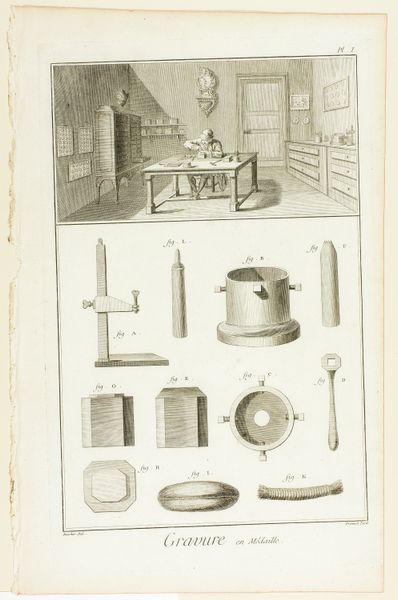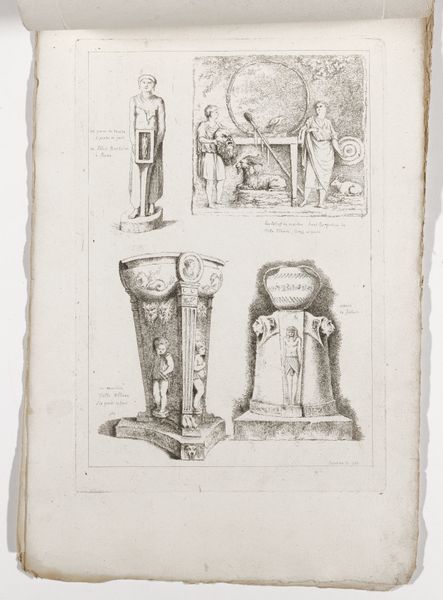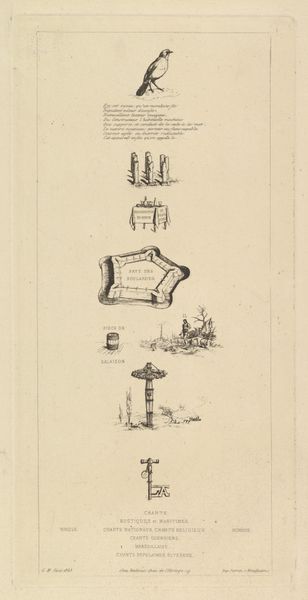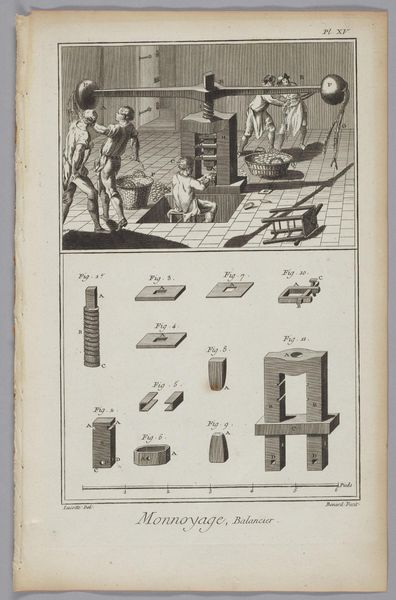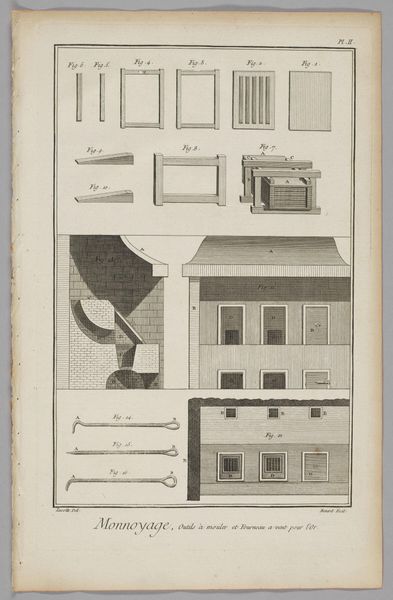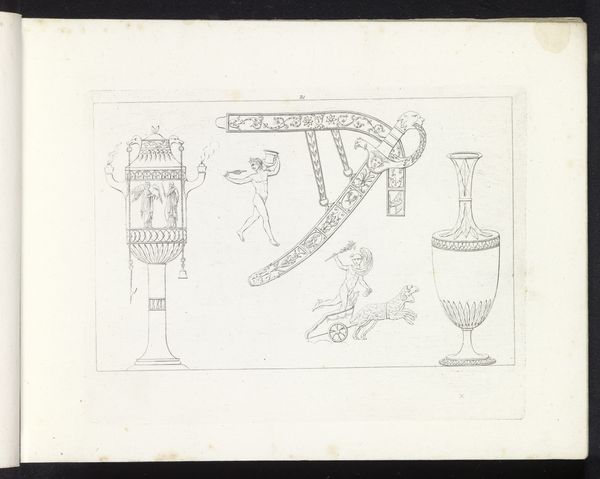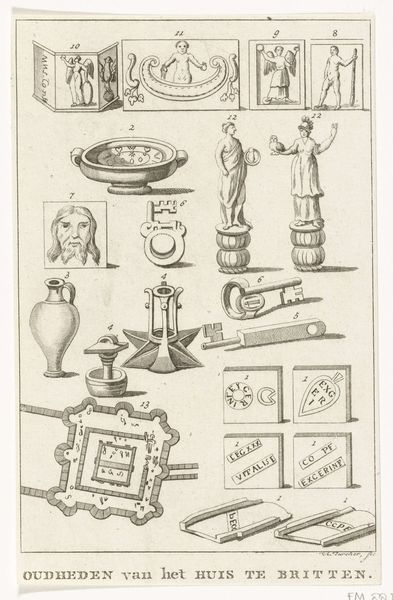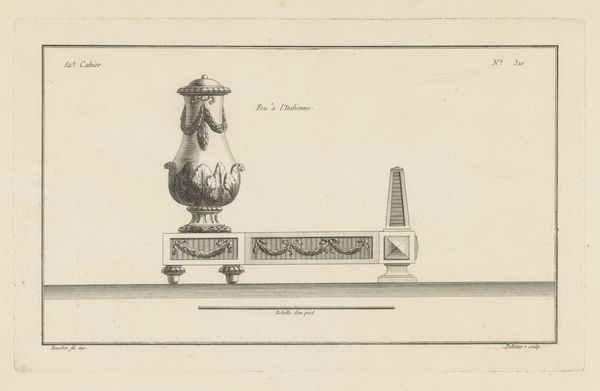
Prøveblad med nordiske oldsager, figurer mm. 1834 - 1866
0:00
0:00
drawing, print, etching, pencil
#
drawing
# print
#
etching
#
figuration
#
ancient-mediterranean
#
pencil
#
line
#
history-painting
#
academic-art
Dimensions: 127 mm (height) x 120 mm (width) (Plademål)
Curator: Take a moment to gaze upon this intriguing study sheet titled "Prøveblad med nordiske oldsager, figurer mm." It was composed by Julius Magnus-Petersen sometime between 1834 and 1866. You’ll notice it combines drawing, etching, and pencil work. Editor: It's like rifling through someone's sketchbook. A very quiet sketchbook. All these faintly rendered objects, almost ghosts of tools and people… what am I even looking at, really? Curator: Indeed! Petersen compiled this sheet as a record, meticulously depicting artifacts of Nordic history: tools, figures, even snippets of everyday life during the period of ancient Nordic culture. This reflects a growing 19th-century interest in history and national identity. These images served a documentary purpose, aligning with academic artistic approaches of the time. Editor: So, this is fact dressed up as art, perhaps? Look at the figures at the bottom – are they surveying ancient burial sites? It feels strangely disconnected, each element a fragment from some grand, lost narrative. It gives off a forlorn vibe… I’m strangely moved. Curator: It's fascinating how you connect with that emotive tone. I'd add that the “disconnected” feel emphasizes the historian's objective gaze—separating these items from their original context and presenting them as artifacts for scholarly investigation. Museums were becoming spaces to understand the past through categorization and careful observation. Editor: It reminds me how much is irrevocably missing when we view history this way – it's all observation and zero feeling. Seeing it displayed like this, the history becomes so clinical. And those ghostly lines—are they from a fading memory or is that Petersen reminding us that time erases everything? Curator: I think it might be both, actually. Petersen's choices regarding line and composition—serve the purpose of communicating cultural heritage to the present while grappling with loss, memory, and the act of historical interpretation itself. It's like a historical document is reflecting the act of understanding itself, in a self-conscious sort of way. Editor: This makes me see how complex the study of artifacts actually is… A somber dance with shadows, I think, attempting to reconstruct the past when perhaps we can only truly experience its echo. Curator: Well put! And something important to keep in mind while touring other exhibitions too.
Comments
No comments
Be the first to comment and join the conversation on the ultimate creative platform.
